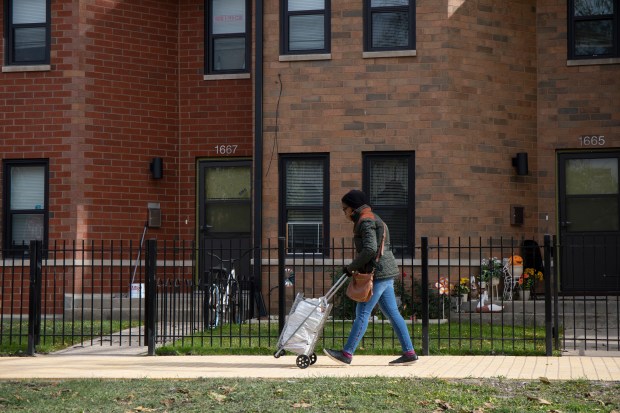Nearly a year after the La Grange Village Board approved a resolution endorsing the Climate Action Plan for the Chicago Region last June, the head of the village’s Environmental Quality Commission said the village has made some progress toward a greener future, but there’s still lots of work to do.
The Climate Action Plan was developed by the Metropolitan Mayor’s Caucus, a membership organization of the Chicago region’s 275 cities, towns and villages, to set goals to reduce future climate impacts.
In La Grange, signing on to the Climate Action Plan was the latest step in an effort that also included adopting a Greenest Region Compact resolution in 2018 that outlines goals to guide municipal action and foster relations between participating communities, according to Rose Naseef, chairwoman of the La Grange Environmental Quality Commission.
She lauded the village’s successes, including achieving a Silver Designation through the national SolSmart program — focusing on solar energy, being recognized as a Tree City USA for 40th year and receiving a Tree City USA growth award from the Arbor Day Foundation.
But, she said, there are more steps to take.
“The regional Climate Action Plan specifically states that to address the root causes of climate change, which is the increased concentration of greenhouse gasses in the atmosphere due to the burning of fossil fuels, municipalities in the Chicago region must aggressively pursue the goals,” Naseef said. “We must use less energy overall. We must use energy from cleaner sources, We must remove greenhouse gasses from the atmosphere.”
Although the ultimate goal of the Climate Action Plan is to become greenhouse gas emissions free, interim mitigation goals set by the Caucus include reducing greenhouse emissions by 50% from 2005 levels by 2030, 65% by 2040, and at least 80% by 2050.
To help the region achieve those goals, it recommends municipal policies that encourage energy efficiency in buildings along with more complicated solutions such as creating district energy systems.
Naseef talked about policies that municipalities could enact— some simple, like making buildings more energy efficient, or more complicated policies, like creating district energy systems.
In La Grange, Naseef suggested reducing carbon in its own operations, enacting environmentally-friendly policies such as streamlining solar codes, and encouraging community members to get involved in and reduce their own emissions.
La Grange Environmental Quality Commission Commissioner Aakruti Liva suggested an action timeline for village leaders. Goals for the next couple years included establishing local sustainability targets, facilitating composting and recycling, flood mitigation, promoting ecosystems in public landscapes and advancing electric vehicle charging infrastructure.
Village President Mark Kuchler said the Village had begun to address some of the commission’s ideas.
“Because of suggestions from the EQC, our Public Works was able to compost several truckloads of leaves, and end some of the regulations on solar (energy) for residents, and we do appreciate those suggestions made in the last year or two,” he said.
After the presentation Kuchler highlighted climate-friendly measures already in place in La Grange.
“We’re continuing to advocate for more and more recycling, more and more composting and the village is going to continue with all that,” he said. “We allowed a company to come in to supply power,” he said. “ComEd continues to supply it, but we went with a company that agreed to use a certain percentage of green energy.”
Kuchler also mentioned leaf collection, saying “we’re trying to move more and more leaves collected into composting versus sending them on a truck to out of state.”
Hank Beckman is a freelance reporter for Pioneer Press.




